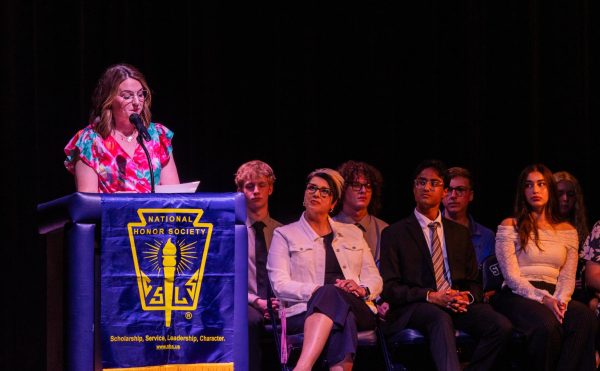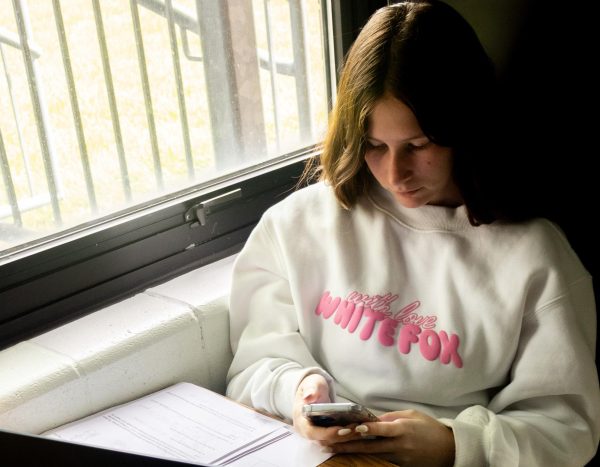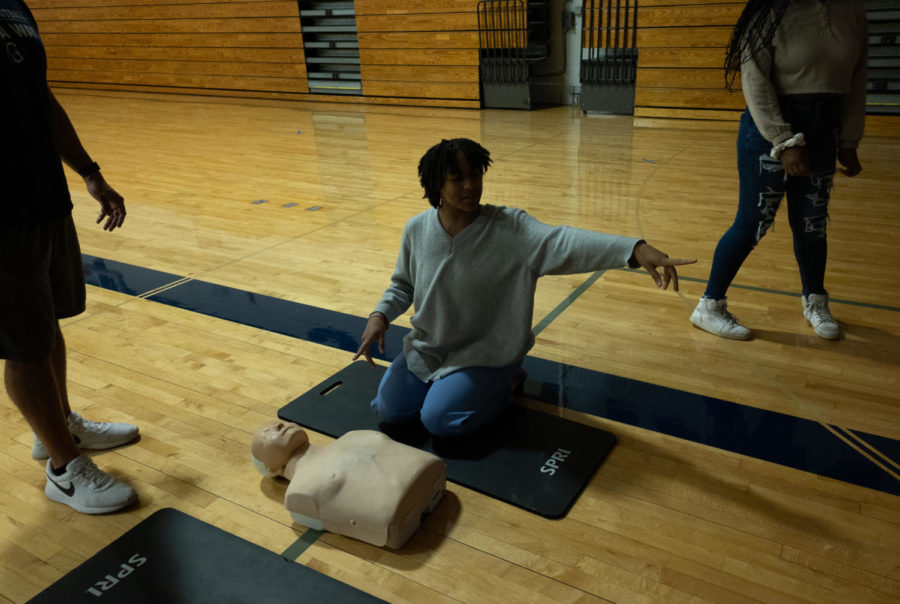Stayin’ Alive
Radigan, Carter help more than 300 seniors take on new CPR training graduation requirement
A senior kneels on a mat ready to practice chest compressions. During the training, Students were shown how to perform CPR, but in order to pass they needed to show with Coach Malach Radigan or Coach Andrew Carter they could complete the action steps.
Cardiopulmonary resuscitation (CPR) is a lifesaving technique that’s useful in many emergencies, in which someone’s breathing or heartbeat has stopped. While CPR is a beneficial skill, if not performed properly you can cause serious damage to the person you are trying to save. In order to combat these effects, Missouri high schools have started requiring students to have at least 30 minutes of hands-only CPR training before they graduate. In charge of leading these efforts are PE teachers Malach Radigan and Andrew Carter. During student’s freshman year health class, they receive a week of training on many different aspects of CPR, but many seniors were unable to receive the training because of the COVID-19 epidemic so, with the help of the Guidance Office, the coaches set up 30-minute rotations to guarantee every senior is able to learn the skills.
While setting up the scenario wasn’t too complicated, teaching the students the action steps wasn’t as straightforward. Since this training is required for graduation students didn’t automatically pass, they needed to show Coach Radigan they were able to complete all the steps in a timely manner.
“They had to be able to show us they could do the action steps,” Coach Radigan said. “We demonstrate to them how to check, call, and compress the dummy by walking them through a scenario and if they are able to complete those action steps they pass.”
While the training wasn’t as easy as many students thought it would have been, senior Delaynie Brown didn’t think it was too difficult.
“It wasn’t too bad,” Brown said. “I think it would definitely be different in a real situation, but [overall], the whole process wasn’t too difficult.”
While the training wasn’t as in-depth as usual, Coach Radigan is proud of how well students were able to grasp the skills.
“I’m sure there could have been a few more fine points we could have focussed on, but just having the experience [was beneficial] for them,” Radigan said.
Coach Radigan wasn’t the only one who found the training beneficial, senior Sam Beardall thinks this real-world training will help many students in the future.
Even though student training didn’t look the same as in years past, Coach Radigan is confident students are properly educated on a very important lifesaving technique.
“CPR is another resource that could save someone’s life,” Coach Radigan said. “I say all the time, I hope you don’t have to use this, but if you have to use it, you’re trained and know what to do.”
Your donation will support the student journalists of Francis Howell Central High School. Your contribution will allow us to purchase equipment and cover our annual website hosting costs. FHCToday.com and our subsequent publications are dedicated to the students by the students. We hope you consider donating to allow us to continue our mission of a connected and well-informed student body.






